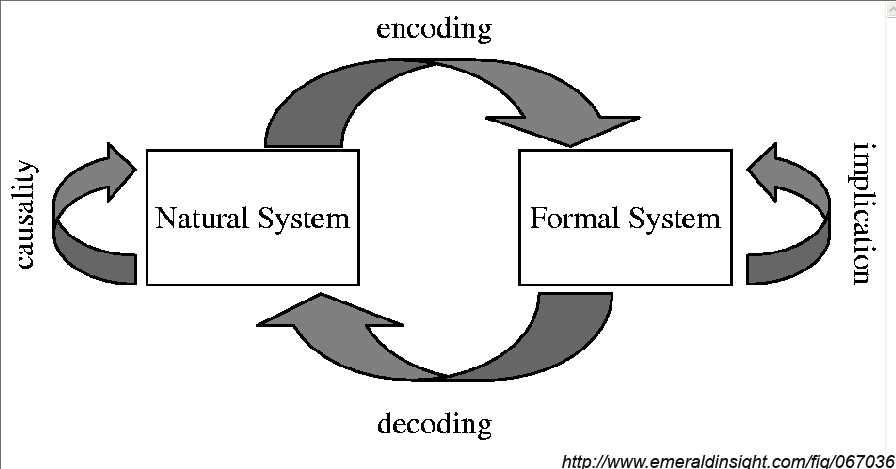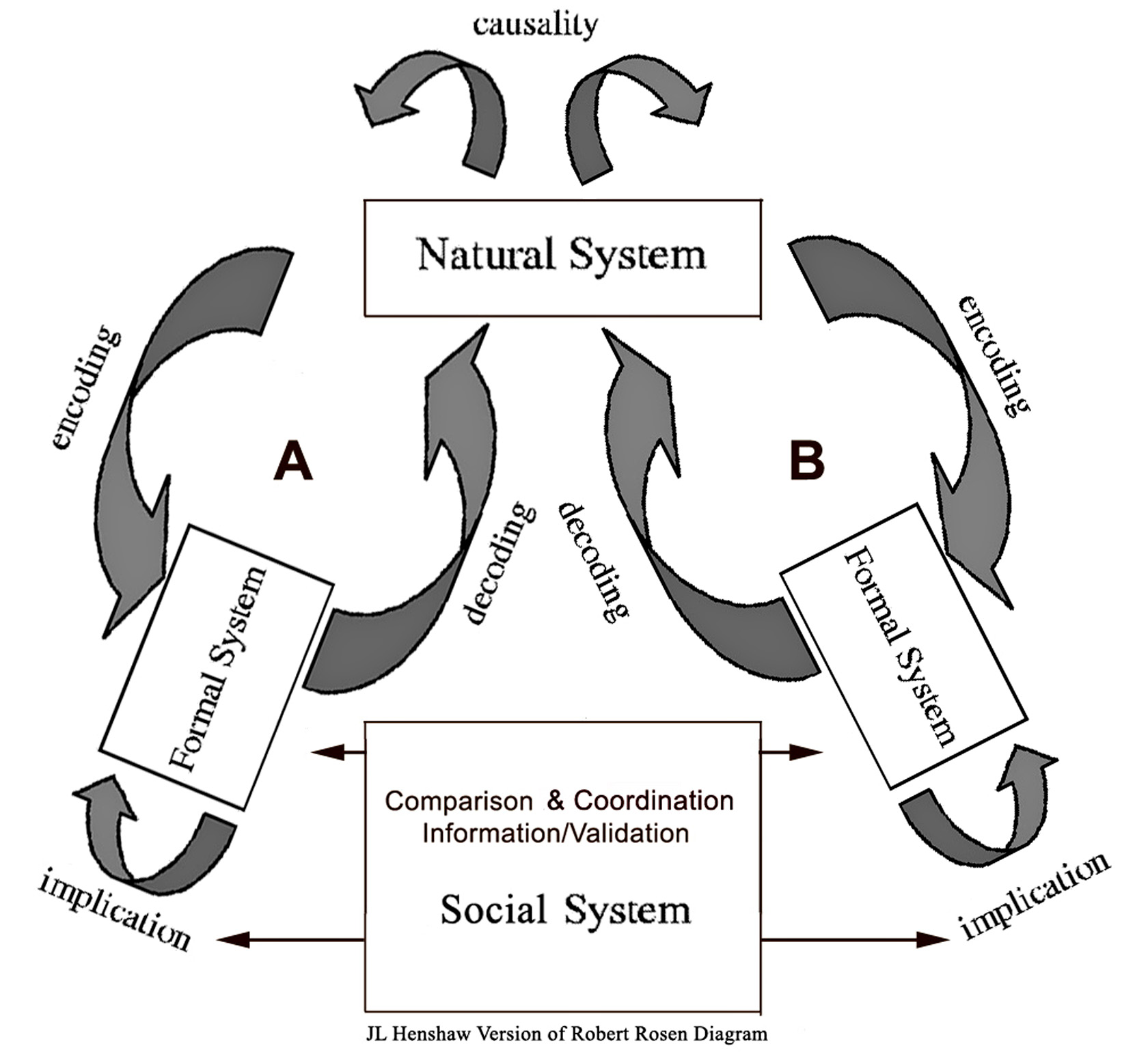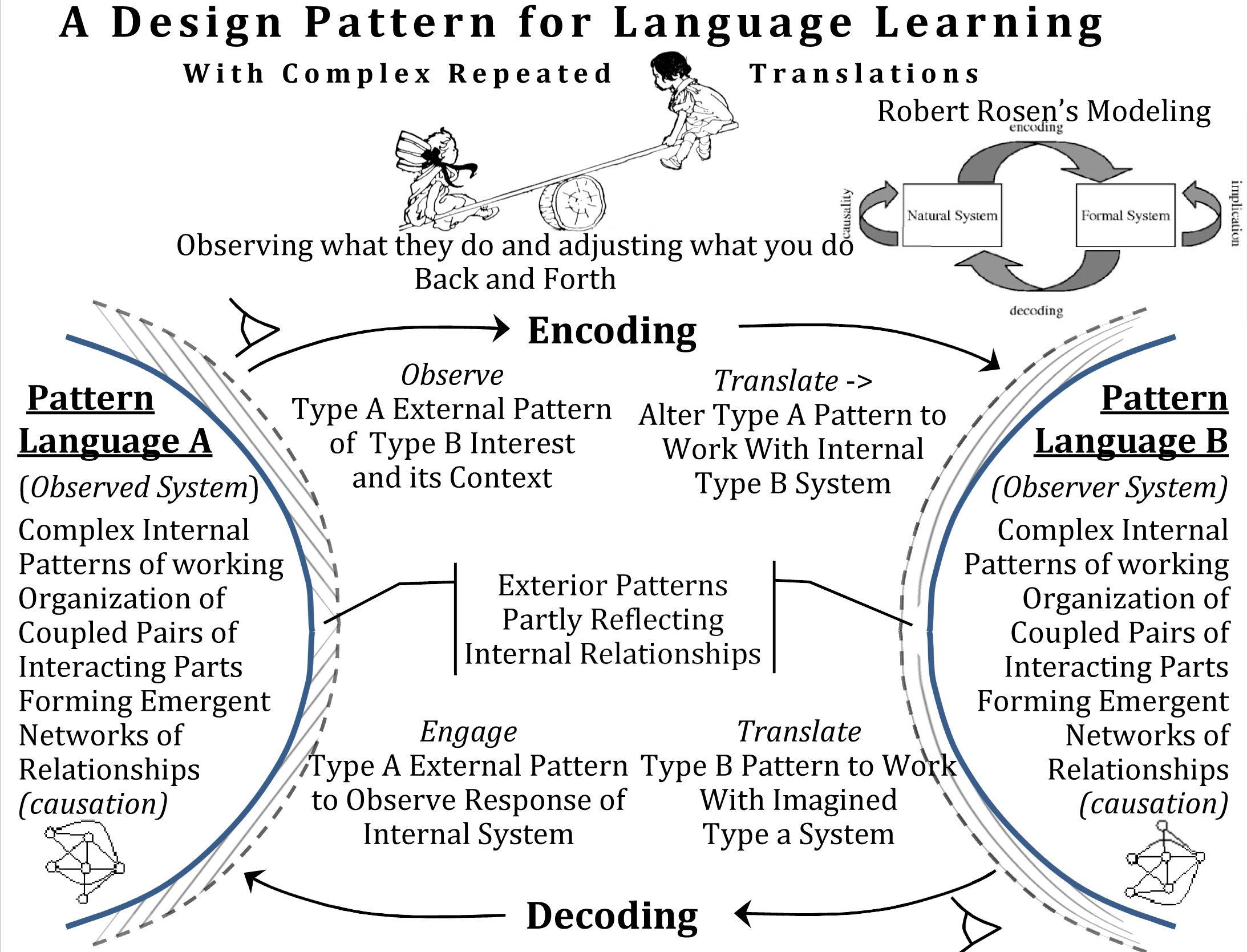Traditional Scientific Languages
Robert Rosen is a puzzle in this regard, though one of the originators of this approach of clearly distinguishing the two subjects. Here are 1) his basic diagram of the relationships between the nature and science, and my variation on it for multiple sciences considering nature in different ways.
fig 1 - Rosen Modeling, relationships between science and nature

Nature's (natural) language of causality and science's conceptual (formal) language of implications are shown as being separate languages of their separate systems, as they physically are based on their separate ways of having originated and patterns of organization. The more realistic situation is our having multiple sciences studying the same systems of nature, using multiple "formalities" for how they do it.
Language Connections
fig 2 - Henshaw-Rosen Modeling for relationships between sciences

A) You may have physicists, economists, environmentalists and politicians all talking about the same natural systems, not realizing:
- that there are big differences between the different formal languages they invent for their common subjects,
- that they have no consistent way of connecting,
- with no one paying much attention to how conceptual languages rely on self-referencing network of interdependent definitions to be logically self-consistent.
B) So... being logically self-consistent, then generally means:
- speaking of natural systems as "deterministic"
- in a different way by every self-consistent formal language for them
- rather than "opportunistic" as the informal natural language all share tends to
It implies the intellectual world has a great need for "language learning", needed to "compare and coordinate" these important but quite inconsistent ways of all referring to the same thing.
A "deterministic world" is what self-consistent logics of interconnected definitions tend to present us with. An "opportunistic world", is what the natural language of the general public tends to portray, as **its words are mostly defined by the individual natural subjects the words refer to**, rather than to the **formal restatement of global consistencies in natural patterns, reduced to rules** .
Pattern Language
What pattern language does is pick out versatile system design elements in nature, discovered by designers and natural scientists for use in opportunistic systems, and so seems to constitute a "new kind of language for how to work with nature, without a formal theory.
Pattern Language Learning (PLL)
The graphic below shows a Pattern Language version on Rosen's Modeling for how science translates the patterns of natural systems into models. The main difference for Pattern Language Learning is concern with "encoding" and "decoding" through multiple layers of loosely related patterns. As you can deduce from the PLL model there is something lost in translation at every step, resulting in a loss of fidelity for the model:
What gets lost in Encoding:
- the internal design patterns of the observed system don't show outside, so the patterns that do show reflect relationships largely not in evidence.
- an observer picks from the exposed patterns of the observed system only those suiting their own methods and interests, to be taken out of context.
- so it becomes important for the observer to note features of the context surrounding the main focus of their interests and abilities
- translating the patterns of interest from the observed system into a pattern language of the observing system also results in a "mismatch in kind" to add to the great loss of pattern due to the natural limitations of observation, 1, 2, & 3
What gets lost in Decoding:
- The test of the observer's patterns would be to see if the observed system responds as the observer's system has modeled it, a "mismatch of kind" as in Decoding loss of fidelity 4.
- All kinds of things can go wrong testing a theory based on highly subjective observation and analysis, but less so if contextual issues are considered in both designing and engaging the test.
- Most of the results of the test are likely to be misunderstood as the design of the test doesn't correspond to the design of the observed system, so without care little may be learned from it.
- Combining good methodology, alert observation and good use of contextual information in making translations generally results in a useful model within understood limits. To complete the image of how the two domains relate, what was lost in translation is collected in a holistic image of the subject's own originality, synthesizing what's being left out as if by "empathy" (or "holpathy") to complete the model by returning its focus to its original subject.
fig 3 - Henshaw Modeling of Pattern Language Learning,
in the pattern of Rosen Modeling

___________________
Pattern Language References
_________________
jlh 11/18/14, ed 1/3/15, 1/20/15 fig#'s